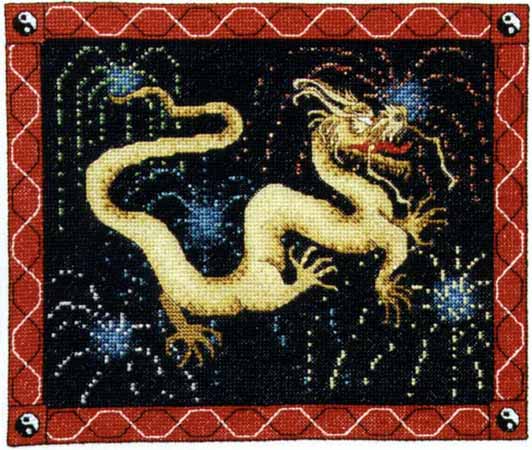
The symbol of the dragon represents spiraling DNA, the path to greater enlightenment.

The symbol of the dragon represents spiraling DNA, the path to greater enlightenment.
The Celestial Chinese Dragon is comparable as the symbol of the Chinese race itself. Chinese around the world, proudly proclaim themselves "Lung Tik Chuan Ren" (Descendents of the Dragon). Dragons are referred to as the divine mythical creature that brings with it ultimate abundance, prosperity and good fortune.
As the emblem of the Emperor and the Imperial command, the legend of the Chinese Dragon permeates the ancient Chinese civilization and shaped their culture until today. Its benevolence signifies greatness, goodness and blessings.
The Chinese Dragon, or Lung , symbolizes power and excellence, valiancy and boldness, heroism and perseverance, nobility and divinity. A dragon overcomes obstacles until success is his. He is energetic, decisive, optimistic, intelligent and ambitious.
Unlike the negative energies associated with Western Dragons, most Eastern Dragons are beautiful, friendly, and wise. They are the angels of the Orient. Instead of being hated, they are loved and worshipped. Temples and shrines have been built to honor them, for they control the rain, rivers, lakes, and seas. Many Chinese cities have pagodas where people used to burn incense and pray to dragons.
The Black Dragon Pool Chapel, near Peking, was reserved for the Empress and her court.
Special worship services took place there on the first and fifteenth of every month. Dragon shrines and altars can still be seen in many parts of the Far East. They are usually along seashores and riverbanks, because most Eastern Dragons live in water.
The Isle of the Temple, in Japan's Inland Sea, has become a famous stopover for pilgrims who meditate and pray to dragons. Both male and female dragons have mated with humans.
Their descendants became great rulers. The Japanese Emperor Hirohito traced his ancestry back 125 generations to Princess Fruitful Jewel, daughter of a Dragon King of the Sea. Emperors in many Asian countries claimed to have dragon ancestors. This made them so proud, that everything they used was decorated with dragons and described in terms of the dragon: dragon-throne, dragon-robe, dragon-bed, dragon-boat. Calling an emperor "dragon-face" was a supreme compliment. People believed that rulers could change themselves into dragons. For hundreds of years, Japanese emperors sat concealed behind bamboo curtains whenever visitors came. Anyone who dared to peek was condemned to death.
Everything connected with Eastern Dragons is blessed.
The Year of the Dragon, which takes place ever twelve years, is lucky. Present-day Oriental astrologers claim that children born during Dragon Years enjoy health, wealth, and long life.
Dragons are so wise that they have been royal advisors. A thirteenth-century Cambodian king spent his nights in a golden tower, where he consulted with the real ruler of the land a nine-headed dragon.
Eastern Dragons are vain, even though they are wise. They are insulted when a ruler doesn't follow their advice, or when people do not honor their importance. Then, by thrashing about, dragons either stop making rain and cause water shortages, or they breathe black clouds that bring storms and floods. Small dragons do minor mischief, such as making roofs leak, or causing rice to be sticky. People set off firecrackers and carry immense paper dragons in special parades. They also race dragon-shaped boats in water all to please and appease their dragons.
The Dragon brings upon the essence of life, in the form of its celestial breath, known to many as sheng chi. He yields life and bestows its power in the form of the seasons, bringing water from rain, warmth from the sunshine, wind from the seas and soil from the Earth.
The Dragon is the ultimate representation of the forces of Mother Nature, the greatest divine force on Earth.
The Chinese Dragon is often seen as the symbol of divine protection and vigilance. It is regarded as the Supreme Being amongst all creatures. It has the ability to live in the seas, fly up the heavens and coiled up in the land in the form of mountains. Being the divine mythical animal, the Dragon can ward off wandering evil spirits, protect the innocent and bestow safety to all that hold his emblem. The Chinese Dragon is look upon as the ultimate symbol of Good Fortune.
The Dragon person is self confident and impulsive and consequently does not always listen to the advice of others. He is also a perfectionist and he sets high standards for himself. Although strong and decisive the Dragon is not manipulative or sly. He refuses to deceive or compromise and fails to spot subversive intent. He enjoys being in command and like an emperor holding court he eliminates obstacles until success is his.
Occupying the 5th position in the Chinese Zodiac, the Dragon is the mightiest of the signs. Dragons symbolize such character traits as dominance and ambition. Dragons prefer to live by their own rules and if left on their own, are usually successful. TheyÕre driven, unafraid of challenges, and willing to take risks. They are passionate in all they do and they do things in grand fashion. Unfortunately, this passion and enthusiasm can leave Dragons feeling exhausted and interestingly, unfulfilled.
While Dragons frequently help others, rarely will they ask for help. Others are attracted to Dragons, especially their colorful personalities, but deep down, Dragons prefer to be alone. Perhaps that is because theyÕre most successful when working alone. Their preference to be alone can come across as arrogance or conceitedness, but these qualities arenÕt applicable. Dragons have tempers that can flare fast.
Health
Considering their hard-working nature, Dragons are healthy overall. They do get stressed and suffer from periodic tension/headaches, likely because they take so many risks. Dragons could benefit from incorporating mild activity into their lives. Yoga or walking would be good as these activities can work both their minds and their bodies.
Career
Dragons prefer leading to being led. Jobs that allow them to express their creativity are good choices. Some good careers include: inventor, manager, computer analyst, lawyer, engineer, architect, broker, and sales person.
Relationships
Dragons will give into love, but wonÕt give up their independence. Because they have quick, sometimes vengeful tempers, their partners need to be tough-skinned. Dragons enjoy others who are intriguing, and when they find the right partners, theyÕll usually commit to that person for life.
Water Dragons - Years 1952 and 2012
The Water Dragon is less selfish and opinionated than the other Dragons. He is more inhibited and less power-hungry. He can accept defeat without recriminations. He makes a good negotiator as he knows when, where, and how to apply pressure. He has a tendency to be over-optimistic and needs to learn how to relinquish what is unfeasible so that he can concentrate his energies on the most rewarding endeavors.
Wood Dragons - Years 1904 and 1964
The Wood Dragon is creative, imaginative, and inquisitive. He is both a thinker and a doer and is capable of brilliant new concepts. His every move is guided by sound logic. His drive and ambition allow him to put many of his ideas into practice, nevertheless this Dragon is capable of concealing his domination and tries not to offend. He will even compromise if it is advantages. Although not as self-centered as other Dragons, he is still outspoken and fearless when challenged.
Fire Dragons - Years 1916 and 1976
The Fire Dragon is the most extroverted and competitive Dragon. He tends to push too hard and expects a lot from everyone. His criticisms are objective and he has the ability to arouse massive popular support. His insatiable ambition can make him short-tempered and intolerant. He is an empire builder who needs to master his less favorable traits and learn how to communicate more humbly with people as individuals.
Earth Dragons - Years 1928 and 1988
The Earth Dragon is a quieter, more reflective Dragon, He will be appreciative of other's opinions even if he fails to agree with them. He is reasonable in his approach to problems and his leadership is less dictatorial. He is not given to outbursts of temper, but at the same time demands respect. He knows the value of cooperation and is more diplomatic than the other Dragons. He is ambitious, but his initiatives are less hurried and more carefully thought out.
Metal Dragons - Years 1940 and 2000
The Metal Dragon is the most strong-willed Dragon. He is inflexible, unbending and combative. He gives little regard to the feelings of others. This ruthlessness can result in a rapid rise to a position of authority, but often at the cost of destroying important relationships. It is futile to attempt to convince him that certain things are simply undoable. He will go it alone if he can't gain support. He succeeds because he refuses to accept failure.
There are nine major types of Chinese dragons. These include the horned dragon, the winged dragon, the celestial dragon (which supports and protects the mansions of the gods), the spiritual dragon which generates wind and rain for the benefit of mankind), the dragon of hidden treasures (which keeps guard over concealed wealth), the coiling dragon (which lives in water), and the yellow dragon (which once emerged from water and presented the legendary Emperor Fu Shi with the elements of writing)
The last of the nine is the dragon king, which actually consists of four separate dragons, each of which rules over one of the four seas, those of the east, south, west, and north.
The most powerful generalized type of Chinese dragon is the horned dragon, or lung, which can produce rain and is totally deaf. Additionally, there is a homeless dragon (Ii) that lives in the ocean and another type (chiao) that is scale-covered and usually inhabits marshes but also keeps dens in the mountains.
There are also nine ways the Chinese have traditionally represented these dragons, each one revealing a different dragon characteristic. There are dragons carved on the tops of bells and gongs, because of the beast's habit of calling loudly when attacked.
A second type is carved on the screws of fiddles, since most dragons are fond of music.
A third is carved on the tops of stone tablets, because of dragons' love of literature.
A fourth is found at the bottom of stone monuments, as dragons can support heavy weights.
A fifth is placed on the eaves of temples, as dragons are ever alert to danger.
A sixth occurs on the beams of bridges, since dragons are fond of water.
A seventh is carved on Buddha's throne, as dragons like to rest.
An eighth is placed on the hilts of swords, since dragons are known to be capable of slaughter.
The ninth is carved on prison gates, as these are dragons that are fond of quarreling and trouble making.
The colors of Chinese dragons are evidently quite variable, but in the case of the chiao type its back is striped with green, its sides are yellow, and it is crimson underneath.
The nine major characteristics of a lung type dragon include a head like a camel's, horns like a deer's, eyes like a hare's, ears like a bull's, a neck like an iguana's, a belly like a frog's, scales like a carp's, paws like a tiger's, and claws like an eagle's. It has a pair of large canine teeth in its upper jaw. The long, tendril-like whiskers extending from either side of its mouth are probably used for feeling its way along the bottom of muddy ponds.
In color dragons varies from greenish to golden, with a series of alternating short and long spines extending down the back and along the tail, where they become longer. One specimen had wings at its side, and walked on top of the water. Another tossed its mane back and forth making noises that sounded like a flute.
Cow-heads are also common. A ten-footer, found lying on the banks of China's Yangtze River, was different from most because of its long, thick eyebrows. A Yellow River variety, seen on shore in the 1920s by a Chinese teacher, was bright blue, and as big as five cows. Both dragons crawled into the water as soon as it started to rain.
A few dragons begin life as fish. Carp, who successfully jump rapids and leap over waterfalls, change into fish-dragons. A popular saying, "The carp has leaped through the dragon's gate," means success, especially for students who have passed their exams.
Male dragons sometimes mate with other species of animal. A dragon fathers an elephant when he mates with a pig, and he sires a racehorse, after mating with a mare.
Once upon a time, there were no rivers and lakes on earth, but only the Eastern Sea, in which lived four dragons: the Long Dragon, the Yellow Dragon, the Black Dragon and the Pearl Dragon.
One day the four dragons flew from the sea into the sky. They soared and dived, playing at hide-and-seek in the clouds.
"Come over here quickly!" the Pearl Dragon cried out suddenly.
"What's up?" asked the other three, looking down in the direction where the Pearl Dragon pointed. On the earth they saw many people putting out fruits and cakes, and burning incense sticks. They were praying! A white-haired woman, kneeling on the ground with a thin boy on her back, murmured:
"Please send rain quickly, God of Heaven, to give our children rice to eat.."
For there had been no rain for a long time. The crops withered, the grass turned yellow and fields cracked under the scorching sun.
"How poor the people are!" said the Yellow Dragon. "And they will die if it doesn't rain soon."
The Long Dragon nodded. Then he suggested, "Let's go and beg the Jade Emperor for rain."
So saying, he leapt into the clouds. The others followed closely and flew towards the Heavenly Palace.
Being in charge of all the affairs in heaven, on earth and in the sea, the Jade Emperor was very powerful. He was not pleased to see the dragons rushing in. "Why do you come here instead of staying in the sea and behaving yourselves?"
The Long Dragon stepped forward and said, "The crops on earth are withering and dying, Your Majesty. I beg you to send rain down quickly!"
"All right. You go back first, I'll send some rain down tomorrow." The Jade Emperor pretended to agree while listening to the songs of the fairies.
"Thanks, Your Majesty!" The four dragons went happily back.
But ten days passed, and not a drop of rain came down.
The people suffered more, some eating bark, some grass roots, some forced to eat white clay when they ran out of bark and grass roots.
Seeing all this, the four dragons felt very sorry, for they knew the Jade Emperor only cared about pleasure, and never took the people to heart. They could only rely on themselves to relieve the people of their miseries. But how to do it?
Seeing the vast sea, the Long Dragon said that he had an idea.
"What is it? Out with it, quickly!" the other three demanded.
"Look, is there not plenty of water in the sea where we live? We should scoop it up and spray it towards the sky. The water will be like rain drops and come down to save the people and their crops."
"Good idea!" The others clapped their hands.
"But," said the Long Dragon after thinking a bit, "We will be blamed if the Jade Emperor learns of this.
"I will do anything to save the people," the Yellow Dragon said resolutely.
"Let's begin. We will never regret it." The Black Dragon and the Pearl Dragon were not to be outdone.
They flew to the sea, scooped up water in their mouths, and then flew back into the sky, where they sprayed the water out over the earth. The four dragons flew back and forth, making the sky dark all around. Before long the seawater became rain pouring down from the sky.
"It's raining! It's raining!"
"The crops will be saved!"
The people cried and leaped with joy. On the ground the wheat stalks raised their heads and the sorghum stalks straightened up.
The god of the sea discovered these events and reported to the Jade Emperor.
"How dare the four dragons bring rain without my permission!" The Jade Emperor was enraged, and ordered the heavenly generals and their troops to arrest the four dragons. Being far outnumbered, the four dragons could not defend themselves, and they were soon arrested and brought back to the heavenly palace.
"Go and get four mountains to lay upon them so that they can never escape!" The Jade Emperor ordered the Mountain God.
The Mountain God used his magic power to make four mountains fly there, whistling in the wind from afar, and pressed them down upon the four dragons.
Imprisoned as they were, they never regretted their actions. Determined to do good for the people forever, they turned themselves into four rivers, which flowed past high mountains and deep valleys, crossing the land from the west to the east and finally emptying into the sea. And so China's four great rivers were formed -- the Heilongjian (Black Dragon) in the far north, the Huanghe (Yellow River) in central China, the Changjiang (Yangtze, or Long River) farther south, and the Zhujiang (Pearl) in the very far south.
The Chinese dragon is as a symbol of auspicious power in Chinese folklore and art, it is the embodiment of the concept of yang [male] and associated with the weather and water as the bringer of rain.
Chinese dragons are believed to be the rulers of moving bodies of water, such as waterfalls, rivers, or seas. They can show themselves as water spouts (tornado or twister over water). There are four major dragons, one representing each sea. For instance the Dragon King of the Eastern Sea, Dragon King of the Western Sea, and so forth.
Because of this association, they are seen as "in charge" of water-related weather phenomenon. In premodern times, many Chinese villages (especially those living close to rivers) had temples dedicated to their local "dragon king." In times of drought or flooding, it was customary for the local gentry and government officials to lead the community in offering sacrifices and conducting other religious rites to appease the dragon, either to ask for rain or a cessation thereof.
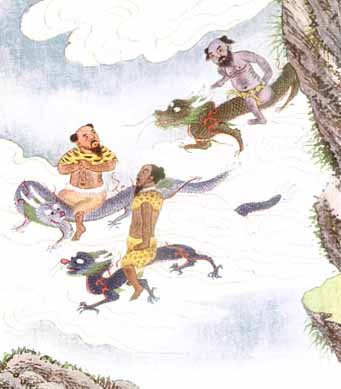
Dragon Gods align with Ancient Alien Theory
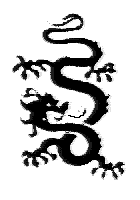
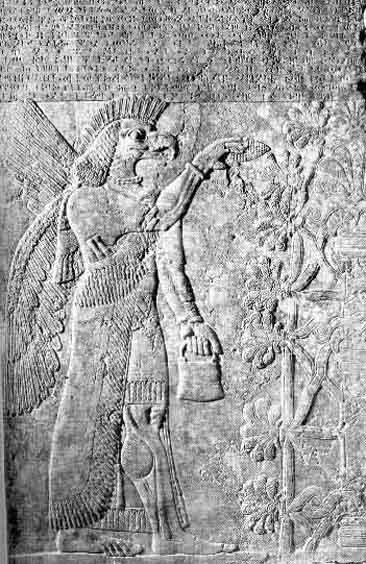
Gods Create Bloodlines - Hybrids and Biogenetic Experiments
Sumerian Gods Allegedly Create a Biogenetic Experiment
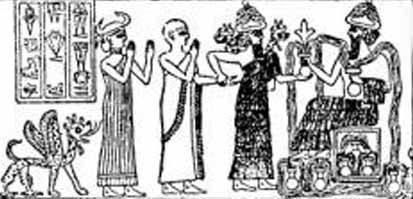

Kundalini
Release of Information from the 8 Origin Cells at the Base of the Spine
Using the Rod to Slay the Dragon
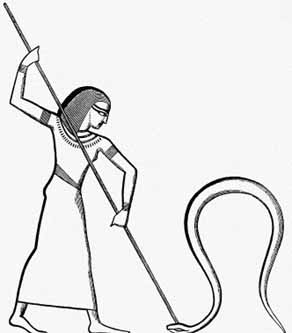
Omega Project, Ending the human DNA, Experiment - Leo, Lion

Spiraling DNA, Golden Ratio, Fibonacci Numbers, Consciousness